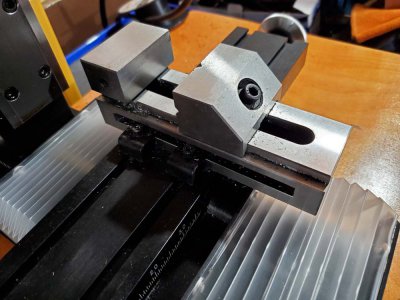- Joined
- Jan 28, 2020
- Messages
- 197
Aaron,
Thank you for the link to the set of machinist squares at Little Machine Shop, and summarizing your experience with them. You answered an unasked question I had: whether having multiple sizes is useful. The squareness tolerance on the squares is quite good, especially for the price.
I am endeavoring to put together a machining kit, that contains the necessary tools to machine what I am going to machine. I am a bit of a minimalist; I want to minimize the number and size of tools that I buy and have. I also appreciate high quality.
I anticipate that most of my machining will be in support of other hobbies, namely chocolate-making, landscape and social-event photography, and rocketry. Sometimes, I will make parts that will need to fit into an existing device -- which requires good metrology. I have already added shaft seals and better bearings to the wheels of a chocolate refiner (a wheel mill).
Are you willing to share the brand and model of the what vise that you have? Two-inch screwless vises with slots for holders seem to be relatively rare. I have not found a Vertex one. I found Interstate and Gibralter vises at MSC Direct.
I see that your location is Ukiah. I grew up in Willits, and I have a house near Willits. I was there from mid-March to end of May, while my employer was closed for COVID-19.
Karl
Thank you for the link to the set of machinist squares at Little Machine Shop, and summarizing your experience with them. You answered an unasked question I had: whether having multiple sizes is useful. The squareness tolerance on the squares is quite good, especially for the price.
I am endeavoring to put together a machining kit, that contains the necessary tools to machine what I am going to machine. I am a bit of a minimalist; I want to minimize the number and size of tools that I buy and have. I also appreciate high quality.
I anticipate that most of my machining will be in support of other hobbies, namely chocolate-making, landscape and social-event photography, and rocketry. Sometimes, I will make parts that will need to fit into an existing device -- which requires good metrology. I have already added shaft seals and better bearings to the wheels of a chocolate refiner (a wheel mill).
Are you willing to share the brand and model of the what vise that you have? Two-inch screwless vises with slots for holders seem to be relatively rare. I have not found a Vertex one. I found Interstate and Gibralter vises at MSC Direct.
I see that your location is Ukiah. I grew up in Willits, and I have a house near Willits. I was there from mid-March to end of May, while my employer was closed for COVID-19.
Karl
Last edited:




